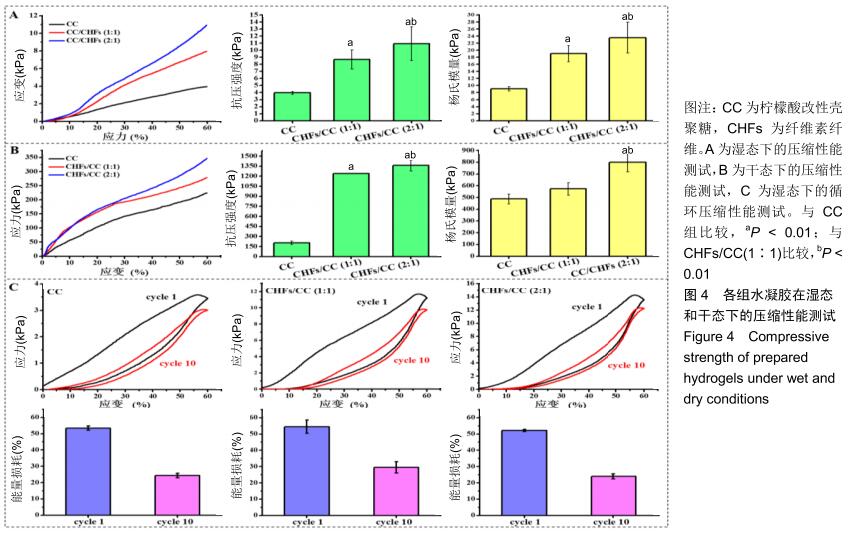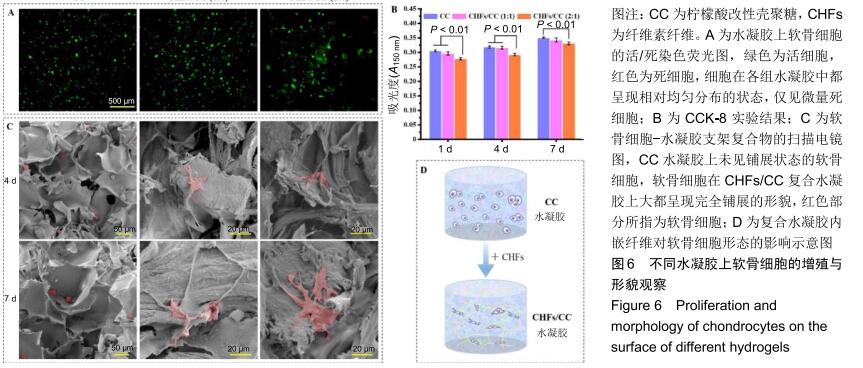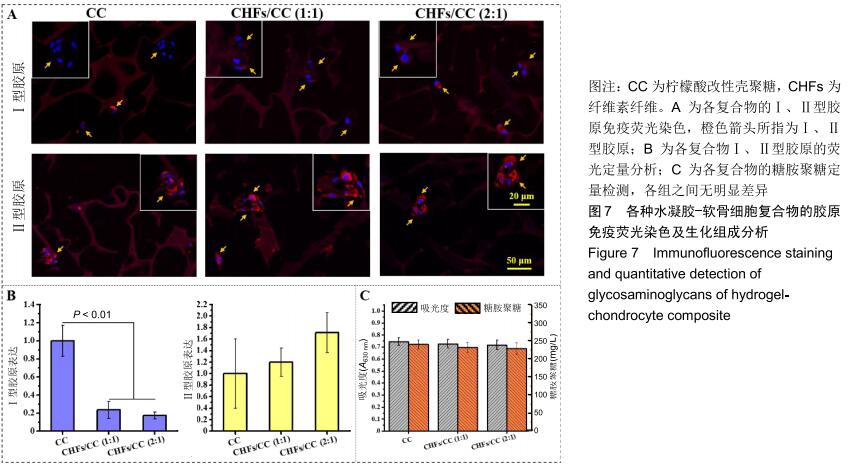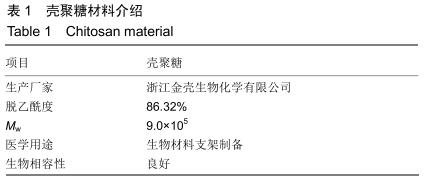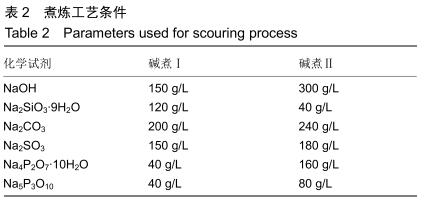|
[1] FU J, YANG F, GUO Z. The chitosan hydrogels: from structure to function.New J Chem. 2018;42(21):17162-17180.
[2] GUPTA N, CRUZ MA, NASSER P, et al. Fibrin-genipin hydrogel for cartilage tissue engineering in nasal reconstruction.Ann Otol Rhinol Laryngol.2019;128(7):640-646.
[3] ASADI N, ALIZADEH E, SALEHI R, et al. Nanocomposite hydrogels for cartilage tissue engineering: a review.Artif Cell Nanomed Biotechnol. 2018;46(3):465-471.
[4] LI J, CHEN G, XU X, et al. Advances of injectable hydrogel-based scaffolds for cartilage regeneration.Regen Biomater. 2019;6(3):129-140.
[5] CAMARERO-ESPINOSA S, ROTHEN-RUTISHAUSER B, FOSTER EJ, et al. Articular cartilage: from formation to tissue engineering.Biomater Sci. 2016;4(5):734-767.
[6] CHUNG C, BURDICK JA. Engineering cartilage tissue.Adv Drug Deliv Rev.2008;60(2):243-262.
[7] ARMIENTO AR, STODDART MJ, ALINI M, et al. Biomaterials for articular cartilage tissue engineering: Learning from biology.Acta Biomater.2018;65:1-20.
[8] STECK E, BERTRAM H, WALTHER A, et al. Enhanced biochemical and biomechanical properties of scaffolds generated by flock technology for cartilage tissue engineering.Tissue Eng. Part A. 2010;16(12):3697-3707.
[9] LIU J, YANG B, LI M, et al. Enhanced dual network hydrogels consisting of thiolated chitosan and silk fibroin for cartilage tissue engineering. Carbohydr Polym.2020;227(1):115335.
[10] ZHAO Z, FANG R, RONG Q, et al. Bioinspired nanocomposite hydrogels with highly ordered structures. Adv Mater.2017;29(45):1703045.
[11] MCCULLEN SD, HASLAUER CM, LOBOA EG. Fiber-reinforced scaffolds for tissue engineering and regenerative medicine: use of traditional textile substrates to nanofibrous arrays.J Mater Chem. 2010;20(40):8776-8788.
[12] XU J, ZHANG J, GAO W, et al. Preparation of chitosan/PLA blend micro/nanofibers by electrospinning. Mater Lett. 2009;63(8):658-660.
[13] DONG W, ZENG Q, YIN X, et al. Preparation and blood compatibility of electrospun nanofibrous CTS/PLA mats from chitosan nanopowders and poly(lactic acid).Polym Compos.2018;39:416-425.
[14] RAD ZP, MOKHTARI J, ABBASI M. Calendula officinalis extract/PCL/ Zein/Gum arabic nanofibrous bio-composite scaffolds via suspension, two-nozzle and multilayer electrospinning for skin tissue engineering. Int J Biol Macromol.2019;135(19):530-543.
[15] GHOSAL K, MANAKHOV A, ZAJICKOVA L, et al. Structural and Surface Compatibility Study of Modified Electrospun Poly(epsilon-caprolactone) (PCL) Composites for Skin Tissue Engineering.AAPS PharmSciTech. 2017;18(1):72-81.
[16] YEKRANG J, SEMNANI D, SEYGHALANI AZ, et al. A novel biodegradable micro-nano tubular knitted structure of PGA braided yarns and PCL nanofibres applicable as esophagus prosthesis.Indian J Fibre Text Tes.2017;42(3):264-270.
[17] YOU Y, YOUK JH, LEE SW, et al. Preparation of porous ultrafine PGA fibers via selective dissolution of electrospun PGA / PLA blend fibers. Mater Lett.2006;62(6):757-760.
[18] BUTCHER AL, OFFEDDU GS, OYEN ML. Nanofibrous hydrogel composites as mechanically robust tissue engineering scaffolds. Trends Biotechnol.2014;32(11):564-570.
[19] VENUGOPAL E, SAHANAND KS, BHATTACHARYYA A, et al. Electrospun PCL nanofibers blended with Wattakaka volubilis active phytochemicals for bone and cartilage tissue engineering. Nanomedicine. 2019;21:102044.
[20] SMYTH M, GARCIA A, RADER C, et al. Extraction and process analysis of high aspect ratio cellulose nanocrystals from corn (Zea mays) agricultural residue.Ind Crop Prod.2017;108:257-266.
[21] 徐传会,张洪亭.玉米皮纤维制取与性能研究分析[J].山东纺织经济, 2012(3):56-58.
[22] WANG X, CHENG L, LIU L. Structure and performance of corn bracts and its fiber.J Textile Res. 2016;37(7):7-12.
[23] XU Q, JI Y, SUN Q, et al. Fabrication of cellulose nanocrystal/chitosan hydrogel for controlled drug release.Nanomaterials.2019;9(2):53.
[24] CHEN Z, ZHAO M, LIU K, et al. Novel chitosan hydrogel formed by ethylene glycol chitosan, 1,6-diisocyanatohexan and polyethylene glycol-400 for tissue engineering scaffold: in vitro and in vivo evaluation. J Mater Sci-Mater Med.2014;25(8):1903-1913.
[25] KIM CH, PARK S, YANG DH, et al. Chitosan for Tissue Engineering.In book: Novel Biomaterials for Regenerative Medicine,2018:475-485.
[26] LI H, HU C, YU H, et al. Chitosan composite scaffolds for articular cartilage defect repair: a review.RSC Adv.2018;8(7):3736-3749.
[27] NETTLES DL, ELDER SH, GILBERT JA. Potential use of chitosan as a cell scaffold material for cartilage tissue engineering.Tissue Eng. 2002; 8(6):1009-1016.
[28] CHUAH YJ, PECK Y, LAU JEJ, et al.Hydrogel based cartilaginous tissue regeneration: recent insights and technologies.Biomater Sci. 2017;5(4):613-631.
[29] ENGKAGUL V, SEREEMASPUN A, CHIRACHANCHAI S. One pot preparation of chitosan/hyaluronic acid-based triple network hydrogel via in situ click reaction, metal coordination and polyion complexation in water.Carbohydr Polym.2018;200:616-623.
[30] BILLIET T, VANDENHAUTE M, SCHELFHOUT J, et al. A review of trends and limitations in hydrogel-rapid prototyping for tissue engineering. Biomaterials.2012;33(26):6020-6041.
[31] CHEN Y, SONG G, YU J, et al. Mechanically strong dual responsive nanocomposite double network hydrogel for controlled drug release of asprin.J Mech Behav Biomed Mater.2018;82:61-69.
[32] FELFEL RM, GIDEON-ADENIYI MJ, HOSSAIN KMZ, et al. Structural, mechanical and swelling characteristics of 3D scaffolds from chitosan-agarose blends.Carbohydr Polym.2019;204:59-67.
[33] HUANG S, ZHAO Z, FENG C, et al. Nanocellulose reinforced P(AAm-co-AAc) hydrogels with improved mechanical properties and biocompatibility.Compos Pt A-Appl Sci Manuf.2018;112:395-404.
[34] RADHAKRISHNAN J, SUBRAMANIAN A, SETHURAMAN S. Injectable glycosaminoglycan-protein nano-complex in semi-interpenetrating networks: A biphasic hydrogel for hyaline cartilage regeneration. Carbohydr Polym.2017;175:63-74.
[35] ZHANG YB, DING JX, XU WG, et al. Biodegradable thermogel as culture matrix of bone marrow mesenchymal stem cells for potential cartilage tissue engineering.Chin J Polym Sci. 2014;32(12):1590-1601.
[36] 杨上莹,袁卉华,易兵成,等.柠檬酸改性壳聚糖水凝胶的制备与性能[J].功能高分子学报,2018,31(3): 232-240.
[37] 王晓婷.玉米苞叶纤维素提取及纳米晶须制备[D].上海:东华大学,2016.
[38] KIM S, CUI ZK, KOO B, et al. Chitosan Lysozyme Conjugates for Enzyme-Triggered Hydrogel Degradation in Tissue Engineering Applications.ACS Appl Mater Interfaces.2018;10(48):41138-41145.
[39] SHEN ZS, CUI X, HOU RX, et al. Tough biodegradable chitosan-gelatin hydrogels via in situ precipitation for potential cartilage tissue engineering.RSC Adv.2015;5(69):55640-55647.
[40] THOMAS LV, RAHUL VG, NAIR PD. Effect of stiffness of chitosan- hyaluronic acid dialdehyde hydrogels on the viability and growth of encapsulated chondrocytes.Int J Biol Macromol.2017;104:1925-1935.
[41] SINGH YP, ADHIKARY M, BHARDWAJ N, et al. Silk fiber reinforcement modulates in vitro chondrogenesis in 3D composite scaffolds.Biomed Mater.2017;12(4):045012.
[42] 刘名金.纤维素纳米晶体增强壳聚糖纤维性能研究[D].上海:东华大学, 2016.
[43] QIANYING D, LIHUA LI, YIQUN LI, et al. Depolymerization of chitosan with the aid of lysozyme and hydrogen peroxide.Chem World. 2005; 46(6):338-340.
[44] 胡星,严涛海.NaOH溶液制备玉米苞叶纤维的初步研究[J].轻纺工业与技术,2012,41(6):12-13.
[45] 黄志成.菠萝叶纳米纤维素/壳聚糖复合膜的制备及其性能研究[D].湛江:广东海洋大学,2014.
[46] LIU XJ, ZHANG YM, LI XS. Tough biopolymer IPN hydrogel fibers by bienzymatic crosslinking approach. Chin J Polym Sci. 2015;33(12): 1741-1749.
[47] ZHANG YB, LIU XC, ZENG LD, et al. Polymer fiber scaffolds for bone and cartilage tissue engineering. Adv Funct Mater. 2019;29(36): 1903279.
[48] ZHANG YB, YU JK, REN KX, et al. Thermosensitive hydrogels as scaffolds for cartilage tissue engineering. Biomacromolecules. 2019; 20(4):1478-1492.
[49] WANG CY, FENG NB, CHANG F, et al. Injectable cholesterol-enhanced stereocomplex polylactide thermogel loading chondrocytes for optimized cartilage regeneration.Adv Healthc Mater. 2019;8(14):1900312.
[50] SANDELL LJ, SUGAI JV, TRIPPEL SB. Expression of collagens I, II, X, and XI and aggrecan mRNAs by bovine growth plate chondrocytes in situ.J Orthop Res.1994;12(1):1-14.
|



